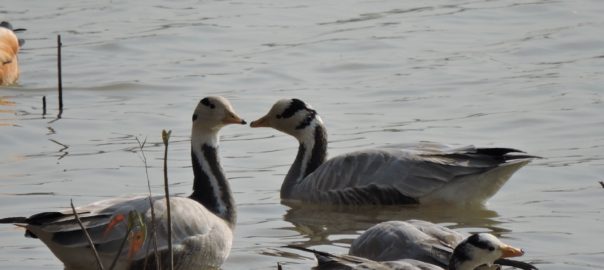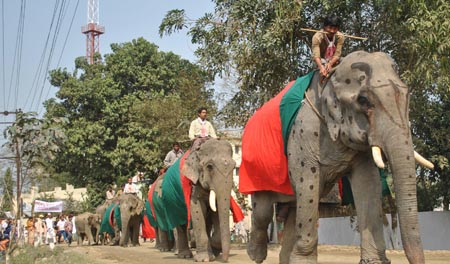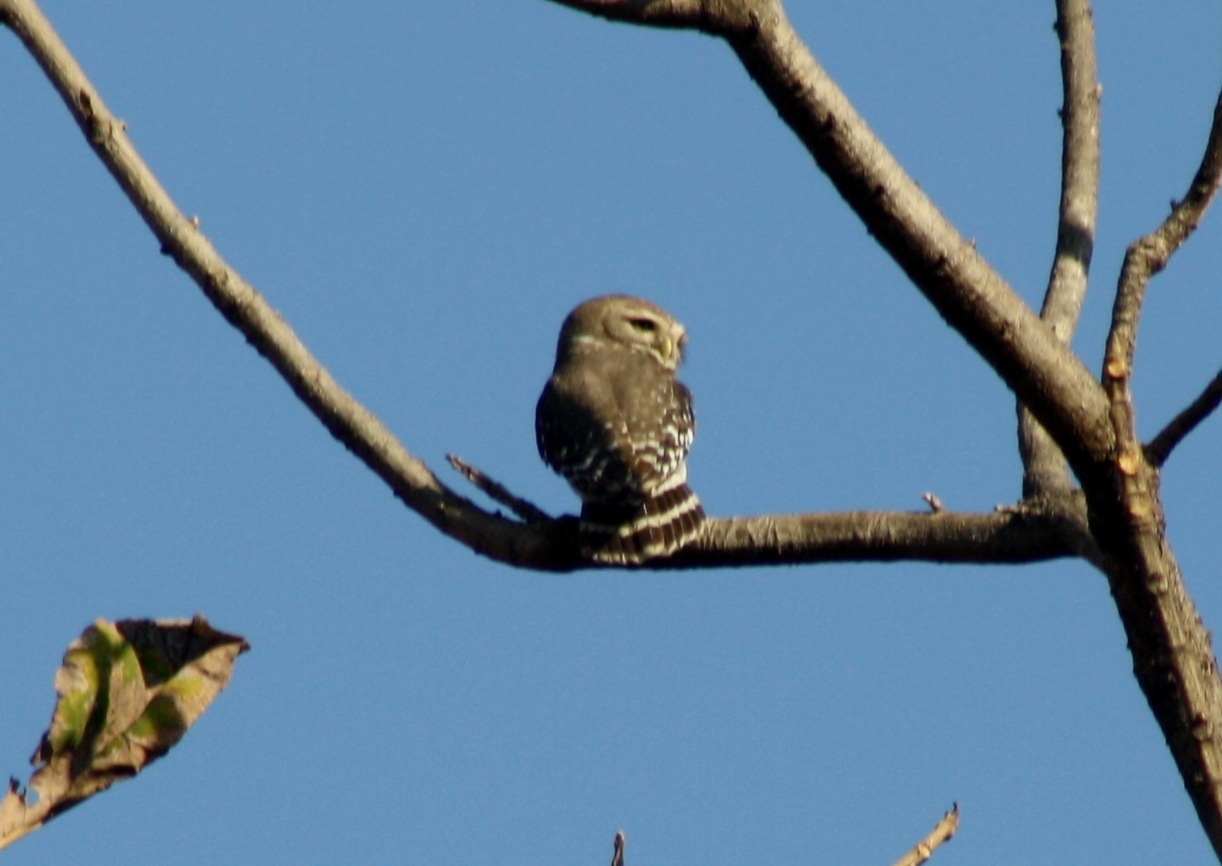Species include Bar-headed geese, and the rare Northern Lapwing, Black-bellied Tern, and the Common Pochard
The pong dam lake in Himachal Pradesh was erected back in 1974 over the Beas river to generate electricity and for irrigation needs. But when birds began flocking in hundreds to winter here or permanently reside, the entire reservoir was declared as a bird sanctuary in 1983, and India’s 25th international Ramsar site in 2002. This year, much to the delight of bird lovers, the lake witnessed the biggest concentration of Bar-headed geese with a 68% rise in numbers of the bird from last year.
Read More: 5 Year National Action Plan announced to conserve Migratory Birds
Last year, the total count of these birds at the lake was 29,443. This year, the census carried out in the last few days showed that 49,496 bar-headed geese have visited the lake. This is the biggest concentration of these birds in any part of the country.
In a recent counting exercise carried out by the forest department officers along with organisations like the Birds of Himachal Pradesh, Himachal Bird Club, International Wetland, Wildlife Institute Of India (WII), and Dharamshala Bird Club, it was found that at least 114 species of different birds were presently at the lake.
This includes,
– 1,04,032 migratory waterbirds of 60 species
– 10,377 resident water birds of 30 species
– 1,292 birds of 24 other local species
Read More: A Book Dedicated to Birds of Haryana
Some of the prominent bird species seen here include the rare and threatened birds like the,
– Common pochard – Vulnerable
– Northern Lapwing – Near Threatened
– Black-bellied Tern – Endangered
– Sarus crane – Vulnerable
– Eurasian curlew – Near Threatened
– Lesser white-fronted Goose – Vulnerable
– Ferruginous Duck – Near Threatened
Here is an infographic from India’s Endangered that you can use to observe and identify some of the endangered and common birds visiting the lake,

The number of birds may rise as the migratory birds trace their journey back after wintering in India.
Why is the Pong Dam lake a favourite with the birds?
According to Sanjeeva Pandey who was the Additional Principal Chief Conservator of Forests (Participatory Forest Management and FDA), Shimla, Himachal Pradesh “As the lake was harnessed for irrigation and electricity generation, five main types of avian habitats appeared in the draw-down area mudflats and mudspits long the receding shore-line (for lapwings, egrets, Grey Herons, Purple Herons); open deep water (mainly for grebes and cormorants); dry sand banks with little or no vegetation (for stone curlews and pratincoles); waterside vegetation and swamps below the out-fall from the dam (warblers, babblers, munias, kingfishers, moorhens, herons and predators); and shallow water at the reservoir margin for dabbling ducks such as pintails, shovellers, gadwalls and wigeons).” She wrote in an article for Sanctuary Asia.
She further adds in her article that when she compared records of bird species before the dam was built and after, she found that while 39 species were recorded before the dam construction, the bird diversity increased significantly later on.
She adds, “Before the creation of the Pong lake, most of the area of Whistler’s PunjabPlain Zone was cultivated, and inhabited by 94 villages, with little forest cover or other natural habitats, making this one of the few examples wherein a dam site proved beneficial to wildlife. In most cases, flooding destroys unique lowland/riverine forest or grassland habitats and terrestrial fauna. The Pong lake is nothing short of a miracle.”
Read More: 9 Places in Mumbai to Watch Rare Birds
Featured image via wikimedia commons





